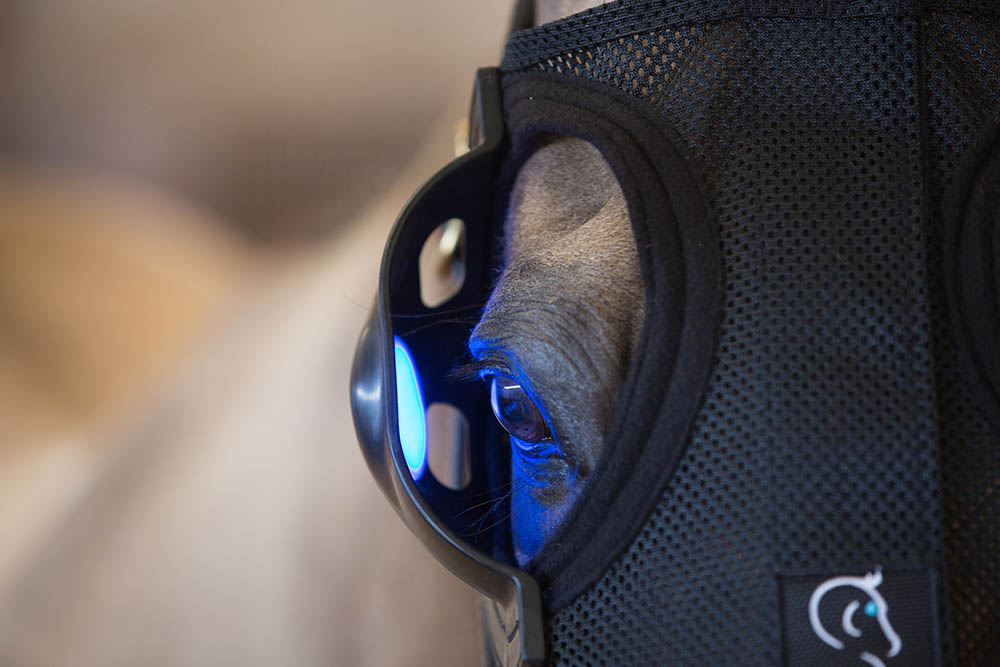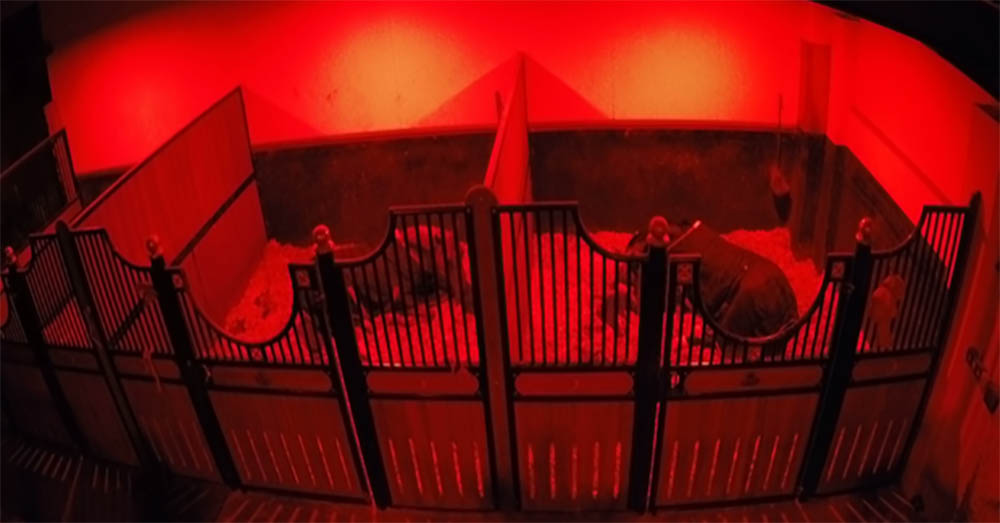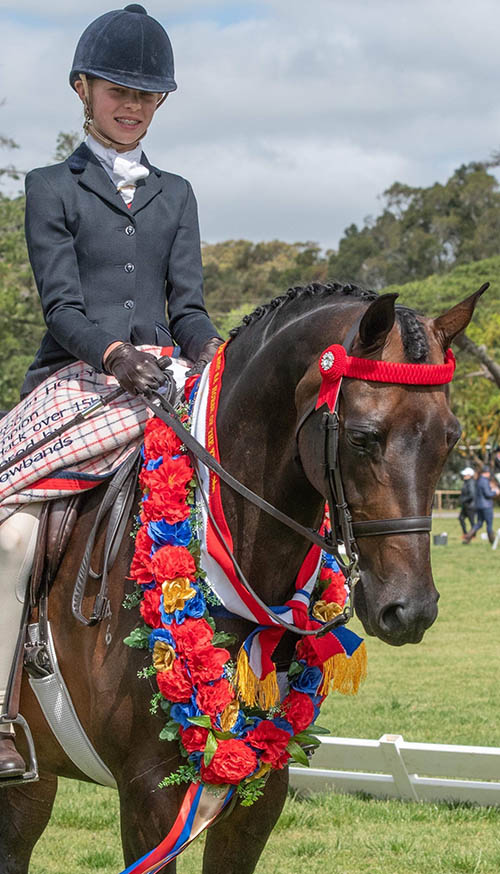Did you know that environmental light is the most important cue influencing a horse’s mental and physical wellbeing? Mimicking nature’s light is a key consideration for equine health and performance.

Nearly all organisms, including horses, are powerfully influenced at the cellular level by the timing of sunrise and sunset. The regular fluctuations in light and dark cycles result in daily (circadian) and annual (circannual) rhythms of physiology and behaviour. Understanding how light cycles influence both physical and mental health can help you manage your horses so that they look and feel their best and can perform to their highest potential.
Like humans, horses need light for more than just vision. When light enters the eye, specialised cells in the retina send signals to the brain. Different wavelengths of light have different functions for the animal. White light is used by the visual centres in the brain to allow the horse to see. A second group of specialised light-sensitive cells respond to blue wavelengths of light and stimulate the part of the brain responsible for regulating the horse’s body clock – a complex system which ensures every cell in the body functions rhythmically in time with the environment. This master brain clock sends timing information throughout the body. The production of the hormone melatonin during darkness hours is an important transmitter of this signal.
The best type of light to keep the horse’s body clock functioning well and every tissue working in harmony is the natural light produced by the sun. Sunlight is naturally high in blue wavelength light and best stimulates the photoreceptors in the eye that regulate circadian and circannual rhythms. The fluorescent and incandescent lights we often use in our barns have minimal influence on the horse’s body clock because they are lacking in blue light.
More about melatonin
Melatonin, known as the hormone of darkness, is produced by the pineal gland in the brain at night. It plays an important role in regulating the horse’s body clock. Melatonin production is very light sensitive and its rhythm is easily disturbed by light at night. Horses living at pasture have strong melatonin rhythms with high production during darkness hours and low levels during daytime. This important rhythm regulates a horse’s immune system, metabolism, mood, rest and recovery, and daytime alertness. For optimum health, stable lighting regimes should ensure that melatonin levels are strong by utilising blue-enriched or natural light by day and avoiding white light exposure at night. Research conducted at University College Dublin revealed that dim red light can be used as an alternative to white light at night in stables without disturbing the melatonin rhythm.


NEW RESEARCH ON BLUE LIGHT
Ground-breaking research conducted at University College Dublin identified that low levels of blue light could regulate important hormone rhythms in the horse. The exciting finding that blue light only needed to be shone in one of the horse’s eyes to have the same effect as bright daylight on a sunny day led to the development of the Equilume Light Mask. This equine headpiece delivers optimum levels of stimulating blue light to support the horse’s body clock, wherever the horse is or whatever the weather conditions. For horse breeders, this scientifically developed tool helps ensure mares are ready for breeding early in the season, improves overall fertility and keeps the costs of maintaining breeding stock “under lights” down. Most importantly, by allowing horses to receive light therapy via a comfortable light mask that they can wear at pasture, horses can spend more time outdoors, behaving naturally in a herd environment where they are happier and healthier.

“Like humans, horses
need light for more
than just vision.”
LIGHTING FOR PERFORMANCE
For stabled performance horses, lighting is particularly important. The equine industry has made amazing advances in nutritional science, veterinary medicine and training technologies, but until recently little attention was given to the level or quality of daily light a horse receives or the role it plays in ensuring optimal health, condition and behaviour.
Unfortunately, normal stable lighting falls significantly short on providing the optimum light spectrum for humans and horses to function well. For the body’s internal clock to work most effectively, stable lighting should replicate the lighting provided by the natural environment as best it can. This means that daytime lighting should be enriched with blue wavelength light similar to sunlight, light transitions at dawn and dusk should occur gradually, white light pollution should be avoided at night to prevent melatonin rhythm disturbances, and the lighting system should be easily programmable.

“For stabled performance
horses, lighting is
particularly important.”
Further research studies were conducted to evaluate a new stable lighting system designed to support and strengthen the horse’s natural internal rhythms. The goal was to provide biologically effective light in a system that replicates the benefits of nature’s environmental lighting for the stabled horse. There are a number of key proven components of the Equilume Stable Light that make it so beneficial for horse health:
1) The use of blue-enriched light that best mimics natural daylight – boosting metabolism, alertness, appetite and reducing the growth of bacteria.
2) The lights dim to red light at night. As we frequently interact with horses during darkness hours, it is often necessary to turn on lights at night. White light at night is a major cause of reduced health and welfare as it disrupts an animal’s circadian rhythms. The low intensity red light at night permits the nightly rise in melatonin, stabilising circadian rhythms. Red light has also been found to stimulate resting behaviour to a greater extent than darkness, making sure our equine athletes get the regeneration and repair time they need to perform at their best.
3) Lights dim up at dawn and dim down at dusk, allowing horses to experience a gradual change in light intensity similar to the natural environment and avoiding the stress response associated with abrupt light changes.

4) The system is pre-programmed to gradually adjust the seasonal changes in day length, maximising performance throughout the year. For breeding stock, the system can be programmed to increase day length at specific times of the year to advance fertility. For performance horses, an annual lighting programme ensures horses are in peak condition for competition time.
LIGHTING FOR A WINNING SHOW COAT
Everyone knows that if a horse feels good on the inside, it shows on the outside. By using light to strengthen the horse’s internal body clock, the benefits can be seen in a healthy, glossy coat. Plus, coat growth can be managed to avoid heavy hair growth during the competition season and avoid the need for clipping. The development of the rechargeable Equilume Cashel Light Mask has been a gamechanger for performance horses to keep their coats looking great throughout the show season. This mobile headpiece allows horses and ponies to receive the optimum level of light to maintain a show coat shine whether they are stabled, out grazing or travelling to a competition. An added bonus of using blue light masks for performance is the effect it has on a horse’s willingness to focus in training and the positive impact it has on overall behaviour. Just like we have an extra pep in our step on a bright sunny day, horses respond similarly when exposed to stimulating blue light.
TAKE-HOME MESSAGE
The rhythms produced by the horse’s body clock affect nearly every aspect of their physiology and behaviour. We must become more aware of how inappropriate lighting might negatively impact everything from their hormone levels to their immune function. Some relatively simple lighting changes can encourage horses to be more alert during the day, rest better at night, maintain healthy body functions, and look and feel their best. EQ

